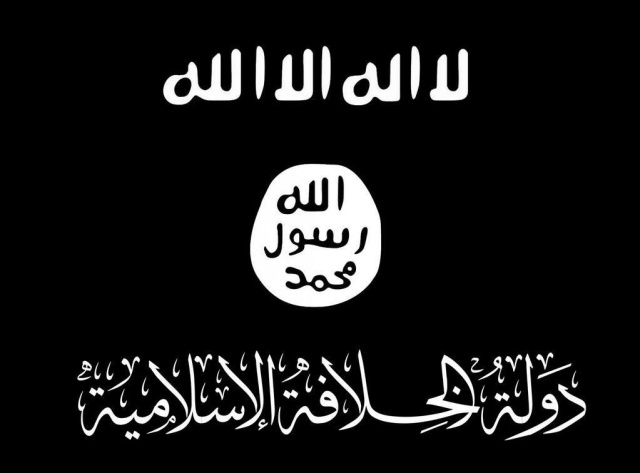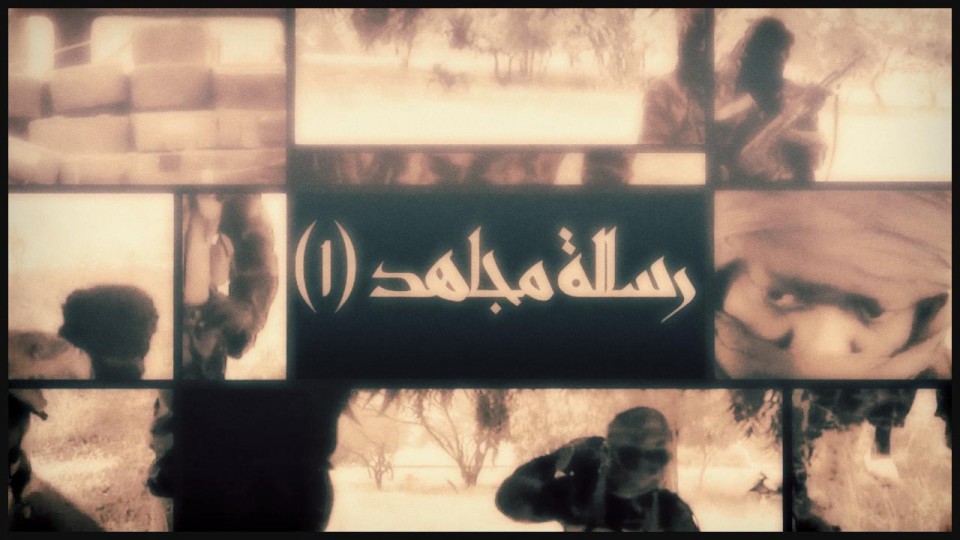
[Audio message and statement redacted, post created for historical record of when it was released]
_____________
To inquire about a translation for this audio message for a fee email: [email protected]
Category: Uncategorized
al-‘Ūrwah al-Wūthqā Foundation presents a new video message from Boko Ḥarām (Jamā’at Ahl al-Sunnah li Da’wah wa-l-Jihād): "Message From a Mujāhid #1"

_____________
To inquire about a translation for this video message for a fee email: [email protected]
Check out my new piece at the Washington Post’s ‘Monkey Cage': "The Islamic State’s Model"

The Islamic State announced several months ago that it was “annexing” territory in Algeria (Wilayat al-Jazair), Libya (Wilayat al-Barqah, Wilayat al-Tarabulus and Wilayat al-Fizan), Sinai (Wilayat Sinai), Saudi Arabia (Wilayat al-Haramayn) and Yemen (Wilayat al-Yaman). It is likely that the Islamic State plans to pursue a similar approach in Afghanistan and Pakistan following its announcement of accepting pledges of allegiance from former members of the Afghan and Pakistan Taliban to also try and “annex” territory there under the framework of a new wilayah called “Wilayat Khorasan.” On its face, this bold declaration of an expanding number of wilayat (provinces) resembles the announcements by al-Qaeda of creating numerous franchises in the mid-2000s. The Islamic State’s “wilayat” strategy differs in significant ways from al-Qaeda’s “franchise” strategy, however.
The academic literature has shed great light on the al-Qaeda franchising strategy. In a recent article Daniel Byman highlights a number of key factors within the al-Qaeda network regarding motivations for affiliation and franchising. Typically, affiliates joined up with al-Qaeda as a result of failure. Affiliation helped with financial support; offered a potential haven that could be exploited, along with access to new training, recruiting, publicity and military expertise; gave branding and publicity; and opened up personal networks from past foreign fighter mobilizations. It in turn helps al-Qaeda with mission fulfillment, remaining relevant, providing access to new logistics networks, and building a new group of hardened fighters.
But, Byman argues, those franchises often became as much a burden as an asset as local interests and views diverged with those of the parent organization. Leah Farrall argues that al-Qaeda increasingly came to view franchising “warily” in part due to its inability to always control its new partners such as Abu Musab al-Zarqawi and al-Qaeda in Iraq as well as because of backlash from unsuccessful cooptation of organizations such as the Libyan Islamic Fighting Group or Egyptian Islamic Jihad. This is one of the reasons why, prior to Osama bin Laden’s death, the Somali jihadi group Harakat al-Shabab al-Mujahideen was not given franchise status. Bin Laden had apprehensions about the group’s utility due to past clan infighting and lack of unity. Following the death of bin Laden though, his replacement, Ayman al-Zawahiri, brought Shabab into the fold, but the results have been quite disastrous; Shabab has declined and also was in an internal feud between its foreign and local members. Will the Islamic State’s wilayat pose a similar burden?
There is one key difference between al-Qaeda’s and the Islamic State’s model for expansion. Al-Qaeda wanted to use its new franchises in service of its main priority: attacking Western countries to force them to stop supporting “apostate” Arab regimes, which without the support of Western countries would then be ripe for the taking. This has only truly worked out with its Yemeni branch, al-Qaeda in the Arabian Peninsula (AQAP). On the other hand, while the Islamic State does not have an issue with its supporters or grassroots activists attacking Western countries, its main priority is building out its caliphate, which is evident in its famous slogan baqiya wa tatamaddad (remaining and expanding). As a result, it has had a relatively clear agenda and model: fighting locally, instituting limited governance and conducting outreach. This differs from al-Qaeda’s more muddled approach – it hoped a local franchise would conduct external operations, but many times franchises would instead focus on local battles or attempts at governance without a clear plan, as bin Laden had warned. Moreover, the Islamic State has had a simple media strategy for telegraphing what it is doing on the ground to show its supporters, potential recruits and enemies that it is in fact doing something. This accomplishes more, even if it appears that the Islamic State is doing more than it actually is, in comparison with al-Qaeda’s practice of waiting for a successful external operation to succeed and then claiming responsibility after the fact.
How is this strategy working? So far, Libya and the Sinai appear to be the locations with the most promise, though the Islamic State’s presence in these areas should not be overstated. It certainly does not command the amount of territorial control as its base in Mesopotamia. That said, the Islamic State’s wilayat in Libya and the Sinai are following the same methodology on the ground and in the media as the Islamic State’s wilayat have in Iraq and Syria.
By contrast, its wilayat in Algeria, Saudi Arabia and Yemen have yet to show any signs of activity. It is certainly possible that the Islamic State is playing a long game and preparing its soldiers and bureaucrats for future jihad, governance and dawa (propagation of Islam), but there are reasons to be skeptical as well. Following Islamic State leader Abu Bakr al-Baghdadi’s announcement of the expansion of the Islamic State in mid-November, its media apparatus took over the media departments of all the local wilayat outside of Mesopotamia. This highlights that, at least on the media level, the Islamic State is in full command and control.
Click here to read the rest.
New video message from Jabhat al-Nuṣrah: "Opening Ceremony of the Office of Daw'ah and Guidance In the Village of al-Nājī"

_____________
To inquire about a translation for this video message for a fee email: [email protected]
Ifrīqīyyah Media presents a new video from Katībat ‘Uqbah Ibn Nāfi': "From the Mountains of Ifrīqīyyah: Message From the Martyr Musā al-Tūnisī and Documenting the Path"

_______________
To inquire about a translation for this video message for a fee email: [email protected]
New statement from the Islamic Emirate of Afghanistan: "Reaction Regarding the Announcement of Prizes by America on Some Mujāhidīn"

American rulers have said in a statement that they have increased prizes from five million dollars to ten million dollars for providing information regarding eminent and sagacious commander Sirajudin Haqani. Meanwhile they have also announced five million dollar on some other Mujahideen of the Islamic Emirate.
The Islamic Emirate of Afghanistan strongly condemns this act and considers it an act of shame and taunt for America. We believe that this announcement has clearly demonstrated the weakness and defeat of the defeated American authorities as they are facing it in the field of battles, politics and in sustaining the moribund regime. This act has proved that the Americans are now trying to hide their defeat through such propaganda wiles.
Americans, who have not defeated the brave Mujahideen of the Islamic Emirate of Afghanistan and our pious nation by dent of ineffective announcements, military operations, bombardments and other atrocities, cannot terrify us by these propaganda announcements. We have to tell them that the mujahideen of Islamic Emirate are the sacrifice-giver travelers of the path of Haq (truth), every one of whom, from superior down to an ordinary Mujahid has been nurturing the desire of martyrdom in the way of Allah, the Almighty. Mujahideen, in accordance with the sayings of Allah, the Almighty, believe that while they are in their jihadic life, they are victorious in every sense. If they are alive, they will obtain the rewards of battlefield and struggles against invaders and if they die, they will receive the great and lofty rank of martyrdom.
As all the Mujahideen of Islamic Emirate are practically engaged in an intense and sanguinary war with invading Americans, particularly, the family of Haqani (may Allah the Almighty protect him) has given enormous sacrifices in this way.
Publishing of these kinds of announcements could not produce any impact except media funfare. Even, it will strengthen the determination of jihadic spirit and hatred in Mujahideen against invading Americans and will pave the way for further bloodiest attacks against Americans. God willing.
Islamic Emirate of Afghanistan
1435/10/25
2014/8/21
____________
Two new statements from Anṣār al-Sharī’ah in the Arabian Peninsula
Click the following links for a safe PDF copies:
Anṣār al-Sharī’ah in the Arabian Peninsula — Continuing Clashes In the Vicinity of the Central Security Forces Military Base In the City of al-Qaṭan
Anṣār al-Sharī’ah in the Arabian Peninsula — Controlling the Buildings Of the Government Headquarters In the City Of al-Qaṭan
___________
twitter.com/akhbaransar/status/497276378619076609
To inquire about a translation for these statements for a fee email: [email protected]
Three new statements from Anṣār al-Sharī’ah in the Arabian Peninsula
Click the following links for safe PDF copies:
Anṣār al-Sharī’ah in the Arabian Peninsula — Opening the City of al-Qaṭan In the Valley Of Ḥaḍramawt and Controlling It
Anṣār al-Sharī’ah in the Arabian Peninsula — Mujāhidīn Attacking the Special Forces Military Base In Sayyūn
Anṣār al-Sharī’ah in the Arabian Peninsula — Controlling All Of the General Security Headquarters In the City Of Sayyūn In the Valley Of Ḥaḍramawt
___________
To inquire about a translation for these statements for a fee email: [email protected]
New statement from al-Ḥussām Media Foundation: "About the Brutal Campaign Against Our People In Ḥaḍramawt"

Click the following link for a safe PDF copy: al-Ḥussām Media Foundation — “About the Brutal Campaign Against Our People In Ḥaḍramawt”
___________
To inquire about a translation for this statement for a fee email: [email protected]
Check out my new ‘Policy Watch’ for the Washington Institute: "The Return of Sunni Foreign Fighters in Iraq"
![]()
Much attention has rightfully been given to the massive wave of Sunni foreign fighters entering Syria to fight the Assad regime in the past two-and-a-half years, but an overlooked aspect of the war’s spillover is the effect on neighboring Iraq. In particular, a growing number of foreign fighter contingents have returned there under the banner of the Islamic State of Iraq and al-Sham (ISIS), determined to fight the Maliki government and the Sunni sahwa(awakening) movement that joined the United States last decade in standing up to “al-Qaeda in the Land of Two Rivers” (popularly known as AQI, one of ISIS’s prior names). This trend — in conjunction with Iraqis fighting alongside ISIS in Syria and the group steadily seizing territory in western Iraq and eastern Syria — has effectively melted away the border. ISIS operatives now operate in both countries and view crossing the border as nothing more than going from one province in their “Islamic State” to another.
This week’s ISIS takeover of Mosul can be viewed as the crest of a second wave of foreign fighters entering Iraq. The first such jihadist wave occurred during the height of the Iraq war last decade, when an estimated 4,000-5,000 foreign fighters arrived over a five-year period (mostly Saudis, Libyans, and Syrians) and were largely quelled by the local sahwa movement and the U.S. “surge.”
After the backlash against AQI several years ago, the organization decided to “Iraqify” itself, believing that locals viewed it as a foreign entity since many of its leaders and members were from other countries. As part of this decision, the group rebranded itself as the Mujahedin Shura Council and later the Islamic State of Iraq, which in turn was changed to ISIS in April 2013 to incorporate its new area of operations (“al-Sham” includes Syria).
The creation of ISIS and its official entrance into the Syrian arena had major reverberations back in Iraq, including an uptick in the death toll from ongoing violence. According to Iraq Body Count, a website that has collated civilian deaths since the start of the 2003 war, approximately 389 deaths occurred per month during the post-sahwa/surge period (October 2008-April 2013). Yet from May 2013 to May 2014, the rate rocketed to 1,029 deaths per month, and June is projected to outpace that average. This upward trend is in line with datasets released by the UN and Agence France Presse, albeit with differing numbers due to their distinct methodologies.
Click here to read the rest.
